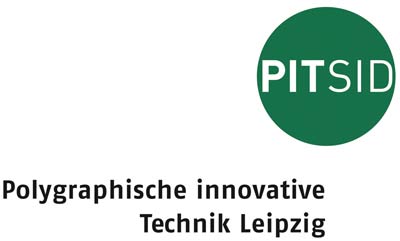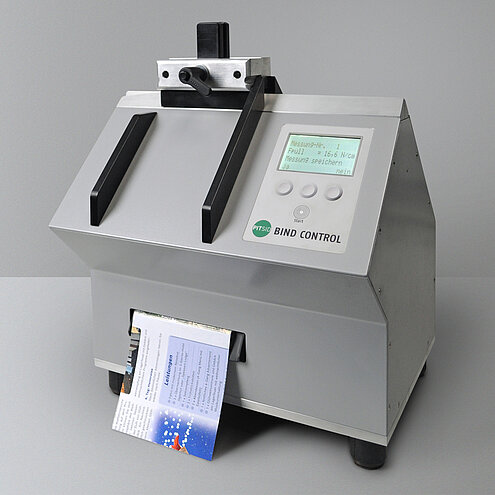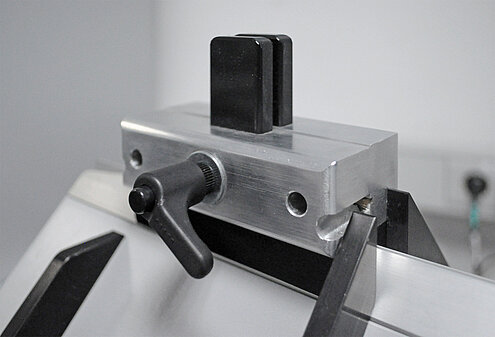Message
Pull Tester – Not Only Just for Perfect Binding
To ensure reproducibility, the German Federal Association of Print and Media (Bundesverband Druck und Medien e.V.) publishes standard values. These values became a standard in the German bookbinding industry as well becoming established in other European countries and became adopted in the ISO standard 16763:2016 “Graphic technology - Post-press - Requirements for bound products”.
The BIND CONTROL is a system that PITSID Polygraphische innovative Technik Leipzig GmbH offers for easily and quickly checking the strength of perfect bound books and booklets.
The device provides several advantages, including compactness. Due to its small size, the booklet spine length is limited to 10 cm.
Because of that, longer book blocks and booklets have to be cut to length, but advantageously you can then compare the bond strength of the head and the foot. That gives the operator additional information about the uniformity and quality of the spine assembly.
The possibility of repurposing the pull tester for different quality tests is shown in the following example from the Druckerei Vetters printing company in Radeburg, Germany.
Druckerei Vetters is a fully integrated printing company which uses four web and one sheet-fed printing presses for different products which are folded and bound at the in-house finishing department.
The web presses are equipped with hot-air dryers and remoistening units. Nevertheless, there have been problems with the strength of the inner pages of the folded signatures.
This quality attribute is very important because the company also produces saddle-stitched books and pamphlets and even this binding process doesn’t eliminate the danger of inner pages falling out from the final product.
Reasons for a decreased residual strength in the fold can be an excessively high temperature of the heater, insufficient remoistening or excessive compression in the folder. Target values for the residual strength in the fold of the pages inside the signature are also available. The residual remaining strength must be greater than 10 N/15mm. This reference originates from the international standard DIN EN ISO 1924-2 “Paper and board - Determination of tensile properties - Part 2: Constant rate of elongation method (20 mm/min)”.
Druckerei Vetters has been using the pull tester to determine the abovementioned strength for several months. For this procedure, strips of the innermost signature are cut to size and fixed with a clamp developed jointly by PITSID and Druckerei Vetters. The sheet gets inserted into the device and the measurement starts. The clamp prevents the sheet from being pulled in completely.
The measured result is converted using the specified reference width and is used as a benchmark for the binding quality within the company as well as for the customer. Based on their experiences, the printing company has developed their own minimum target value to ensure a smooth finishing process and to fulfil their quality standard. The unwanted detachment of the innermost signature as well as the uncertainties for achieving smooth operation are now a thing of the past because the operator can validate the residual strength in the fold during the setup process and during production.
PDF-Download Press Release



